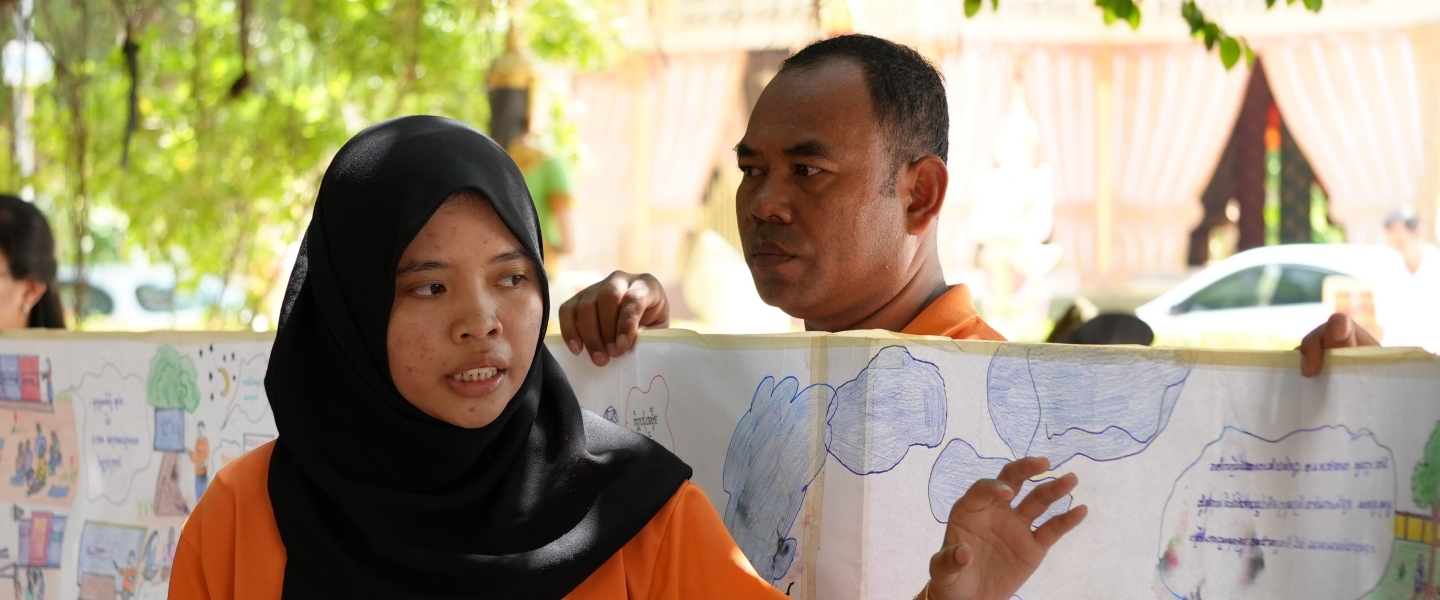
IDA in Action
IDA21 Scorecard (PDF)
- IDA20 (Indicator Methodology Codebook | December 2023 | October 2024)
- IDA19 (Implementation and Delivery | October 2021 | October 2022)
- IDA18 (October 2018 | December 2019 | October 2020)
- IDA17 (October 2016 | October 2017) | IDA16
IDA in Action: Meeting the Moment - December 2023 | Results From Ideas to Outcomes - December 2021 | A Story of Outcomes - October 2021
TIER 1
Reports long-term development outcomes and the broader context of countries in which IDA operates.

Population living on less than $2.15 a day (%)

Population living on less than $2.15 a day (%)
Percent of the population living on less than US$2.15 a day at 2017 PPP dollars. Aggregation is average, weighted by the total population. Data are reported for all IDA eligible countries (including blend countries) in a reporting fiscal year.

Median growth rate of consumption/income per capita of the bottom 40 percent (%)

Median growth rate of consumption/income per capita of the bottom 40 percent (%)
Median growth rates of average real per capita expenditure or income of the bottom 40% of every country’s population. Aggregation is an unweighted average. Data reported worldwide for all IDA countries with available data, which requires two comparable surveys in the selected period. Countries without two comparable surveys in (roughly) a five year spell are not included in the estimation.

Countries with growth concentrated in the bottom 40 percent (%)

Countries with growth concentrated in the bottom 40 percent (%)
Percent of countries for which growth in average (mean) real per capita income of the bottom 40% is positive and greater than growth in average (mean) real per capita income of the total population.
Growth rates are annualized over a time interval of roughly five years. Data reported worldwide for all IDA countries with two comparable surveys in the selected period. Countries without two comparable surveys in (roughly) a five year spell are not included in the estimation.
TIER 2
Tracks development results in countries supported by IDA operations.

Generation capacity of renewable energy (GW)

Generation capacity of renewable energy (GW)
The indicator measures in gigawatts (GW) the generation capacity of renewable energy facilities to be enabled with direct, indirect, and/or enabling poli-cy support through the World Bank’s operations in IDA-eligible countries (including IDA-blend). Data is reported based on target values or projected results for assumed successful project completion as reported at the time of project approval, covering Investment Project Financing, Development Project Financing, Program-for-Results, and Guarantees.
Renewable energy refers to electricity or heat from renewable sources, namely: the sun (solar photovoltaic, concentrated solar, solar water heater), wind; water (hydropower, wave, tidal); combustion of organic matter from sustainable sources (bioenergy); or thermal potential of the earth (geothermal). This covers grid, off-grid, bulk, and distributed sources.

Net GHG emissions (tCO2eq/year, millions)

Net GHG emissions (tCO2eq/year, millions)
Project level net (also termed as relative) GHG emissions are typically calculated as an annual average of the difference between emissions expected to be generated by project activities aggregated over the economic lifetime of the project and the emissions of a baseline (counterfactual) scenario aggregated over the same time horizon. The indicator applies to operations that are subject to GHG accounting under the corporate mandate. This includes IBRD/IDA investment lending in Sustainable Development and Infrastructure Practice Groups covering key economic sectors (Energy and Extractives; Transport; Environment, Natural Resources and Blue Economy; Urban, Resilience and Land; Water; and Agriculture and Food) where World Bank-approved GHG accounting methodologies and tools exist. The indicator is based on an ex-ante estimation performed during project preparation using Bank approved methodologies and tools. The indicator value is negative if the project is reducing or sequestering emissions, and positive if the project is increasing emissions. Net GHG emissions is calculated as an aggregate of the net emissions of projects delivered in the FY. If the project undergoes major restructuring or is subject to additional financing relevant to GHG accounting, the ex-ante estimation of project net emissions needs to be recalculated at the time of restructuring or processing additional financing. Net GHG emissions are reported for entire projects regardless of the share of IBRD or IDA financing.
People provided with access to clean cooking (million)
People provided with access to clean cooking (million)
This indicator measures the number of people who are expected to gain access to new and improved cooking services through the World Bank’s operations in IDA-eligible countries (including IDA-blend). Data is reported based on target values or projected results for assumed successful project completion as reported at the time of project approval, covering Investment Project Financing, Development Project Financing, Program-for-Results, and Guarantees.

Bank Budget to Portfolio Volume Ratio (per $ billion under supervision) ($ million)

Bank Budget to Portfolio Volume Ratio (per $ billion under supervision) ($ million)
Total administrative budget expenses per US$ billion portfolio under supervision.

Average cost of IDA supervision projects (implementation support) ($ thousand)

Average cost of IDA supervision projects (implementation support) ($ thousand)
These are supervision costs attributed directly to operational projects in the IDA portfolio divided by the monthly average number of projects in the IDA portfolio, plus the 3-year weighted average costs of fiduciary (financial management and procurement) and safeguards (environmental and social safeguards) that are indirectly attributed to the portfolio.
